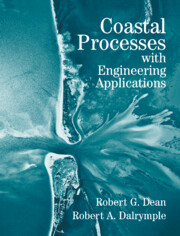Book contents
5 - Waves and Wave-Induced Hydrodynamics
Published online by Cambridge University Press: 29 May 2010
Summary
Freak waves are waves with heights that far exceed the average. Freak waves in storms have been blamed for damages to shipping and coastal structures and for loss of life. The reasons for these waves likely include wave reflection from shorelines or currents, wave focusing by refraction, and wave–current interaction.
Lighthouses, built to warn navigators of shallow water and the presence of land, are often the target of such waves. For example, at the Unst Light in Scotland, a door 70 m above sea level was stove in by waves, and at the Flannan Light, a mystery has grown up about the disappearance of three lighthouse keepers during a storm in 1900 presumably by a freak wave, for a lifeboat, fixed at 70 m above the water, had been torn from its mounts. A poem by Wilfred W. Gibson has fueled the legend of a supernatural event.
The (unofficial) world's record for a water wave appears to be the earthquake and landslide-created wave in Lituya Bay, Alaska (Miller 1960). A wave created by a large landslide into the north arm of the bay sheared off trees on the side of a mountain over 525 m above sea level!
INTRODUCTION
Waves are the prime movers for the littoral processes at the shoreline. For the most part, they are generated by the action of the wind over water but also by moving objects such as passing boats and ships.
- Type
- Chapter
- Information
- Coastal Processes with Engineering Applications , pp. 88 - 130Publisher: Cambridge University PressPrint publication year: 2001



